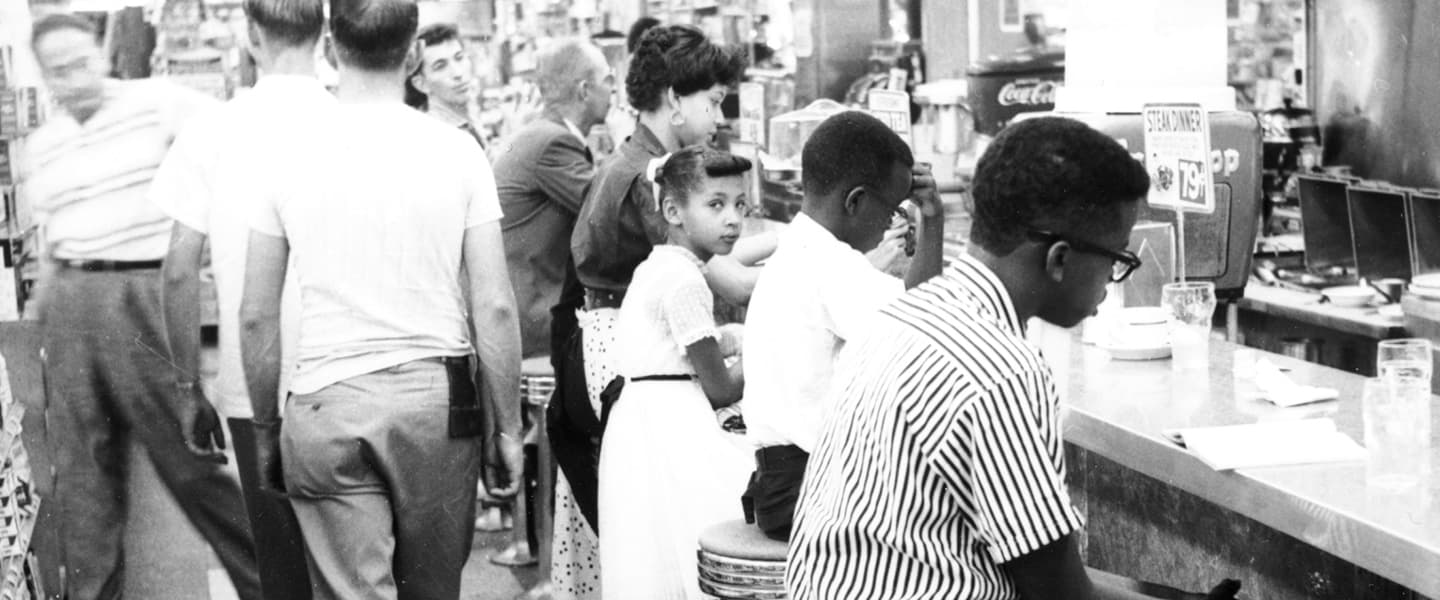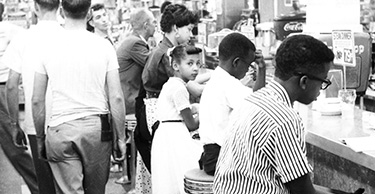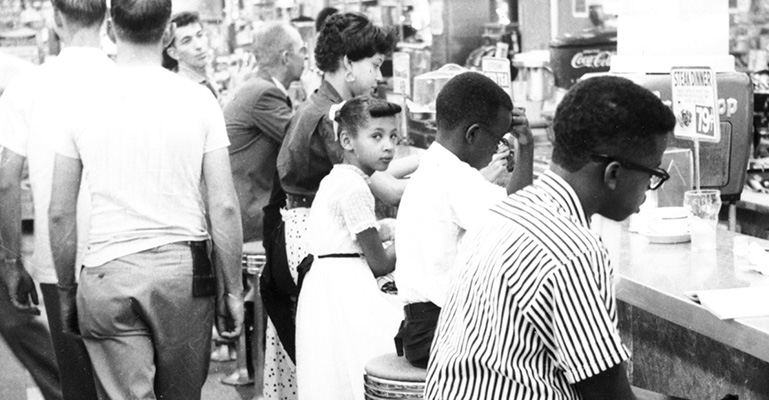With some help from adults, Ayanna and a group of kids held a protest called a sit-in. They went into a “white” restaurant and sat at the counter. No one took their order, but they stayed until the restaurant closed.
The next day, the kids went back to the restaurant, but the waitresses still wouldn’t serve them. Soon things grew tense. Some white customers yelled at the kids and threw ketchup on them. The kids stayed calm.
During the third day, they finally got good news. The restaurant’s owners agreed to start serving black customers.
“It was a big deal,” Ayanna recently told Scholastic News. “It was a slam dunk to be able to sit there and have a hamburger and Coke.”
Ayanna and her friends weren’t done. For six years, they took part in more sit-ins. One by one, the restaurants in their area became integrated. Black people and white people could eat side by side.
“Even though I was little, my voice was just as important as everyone else’s voice,” says Ayanna.



